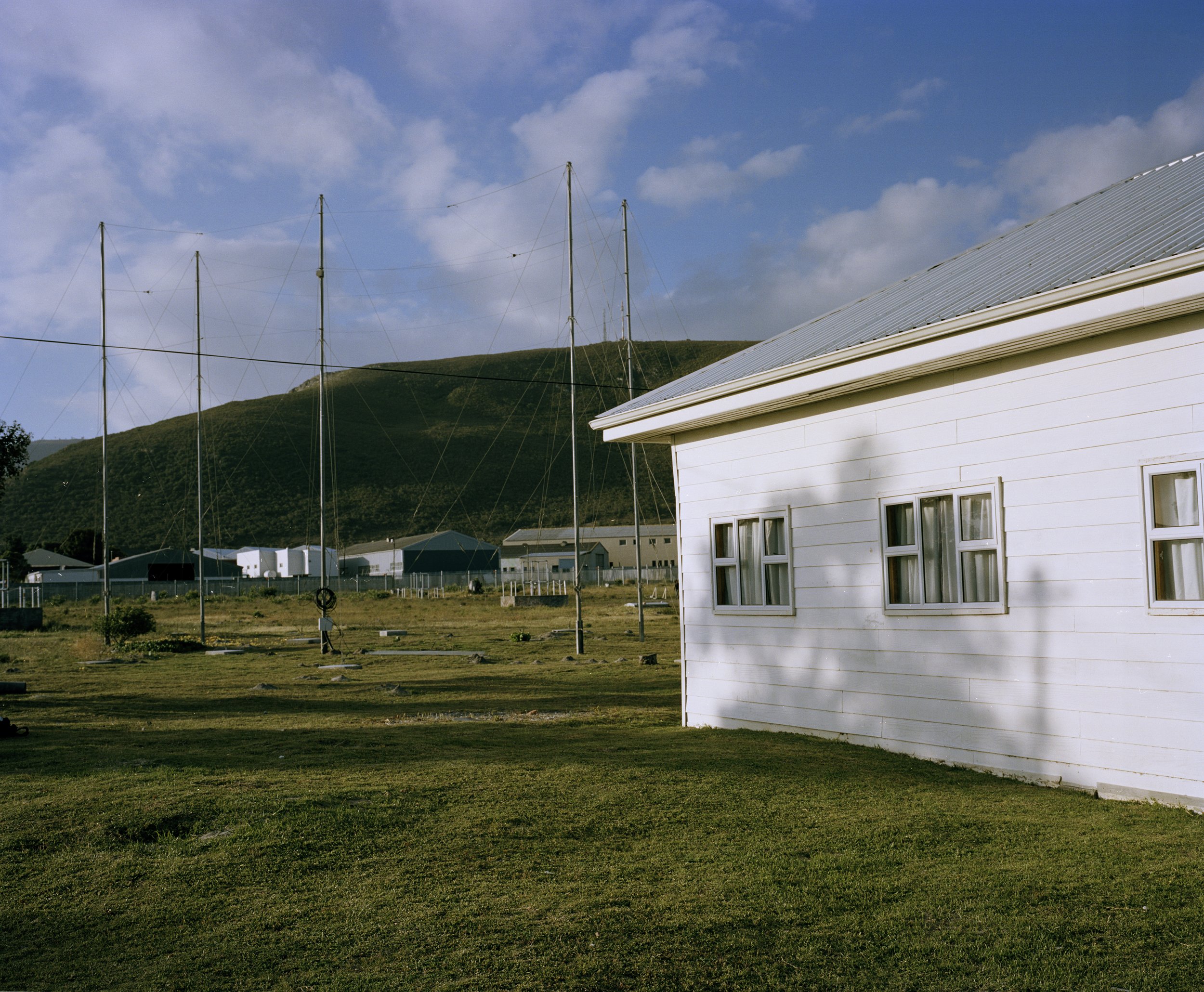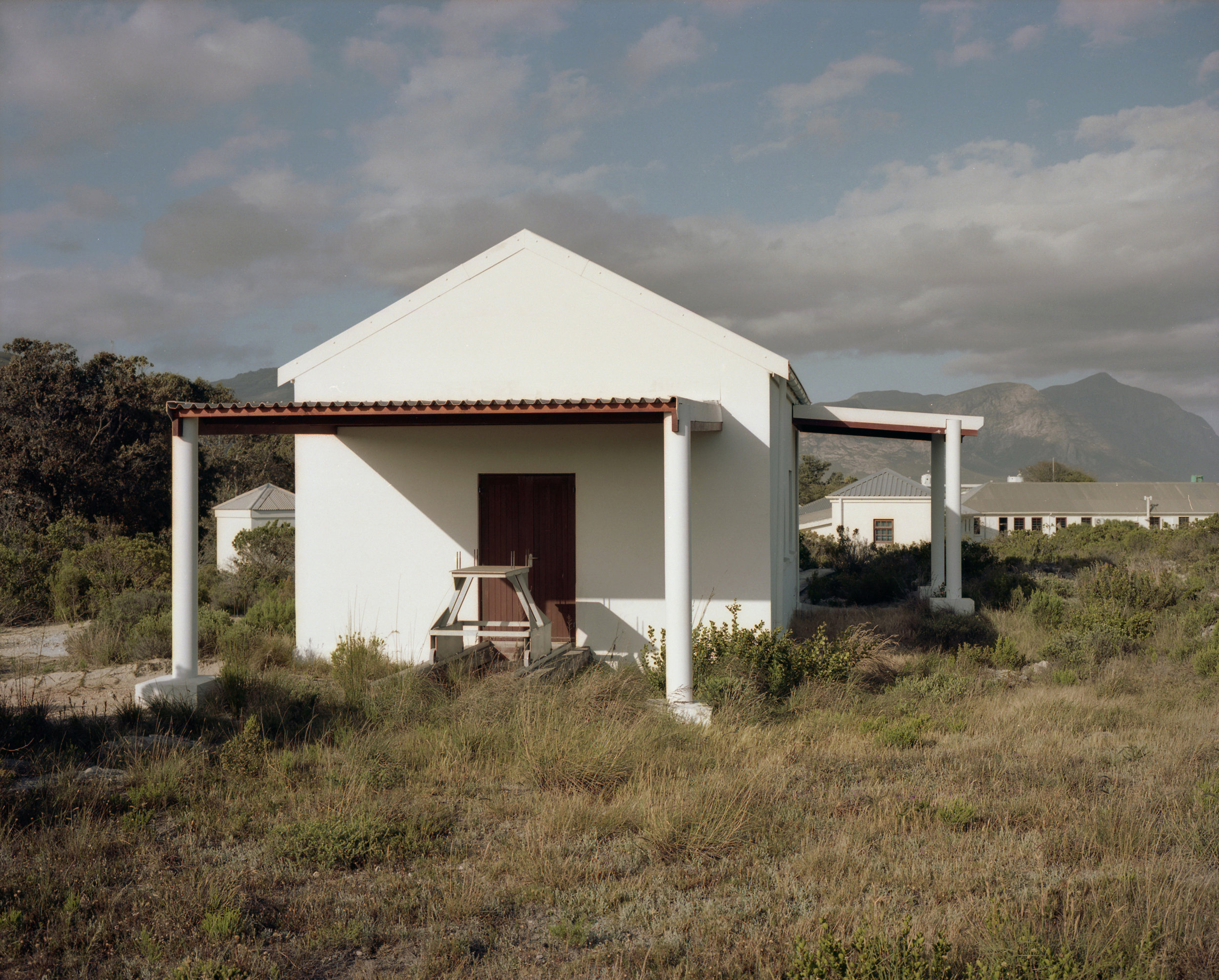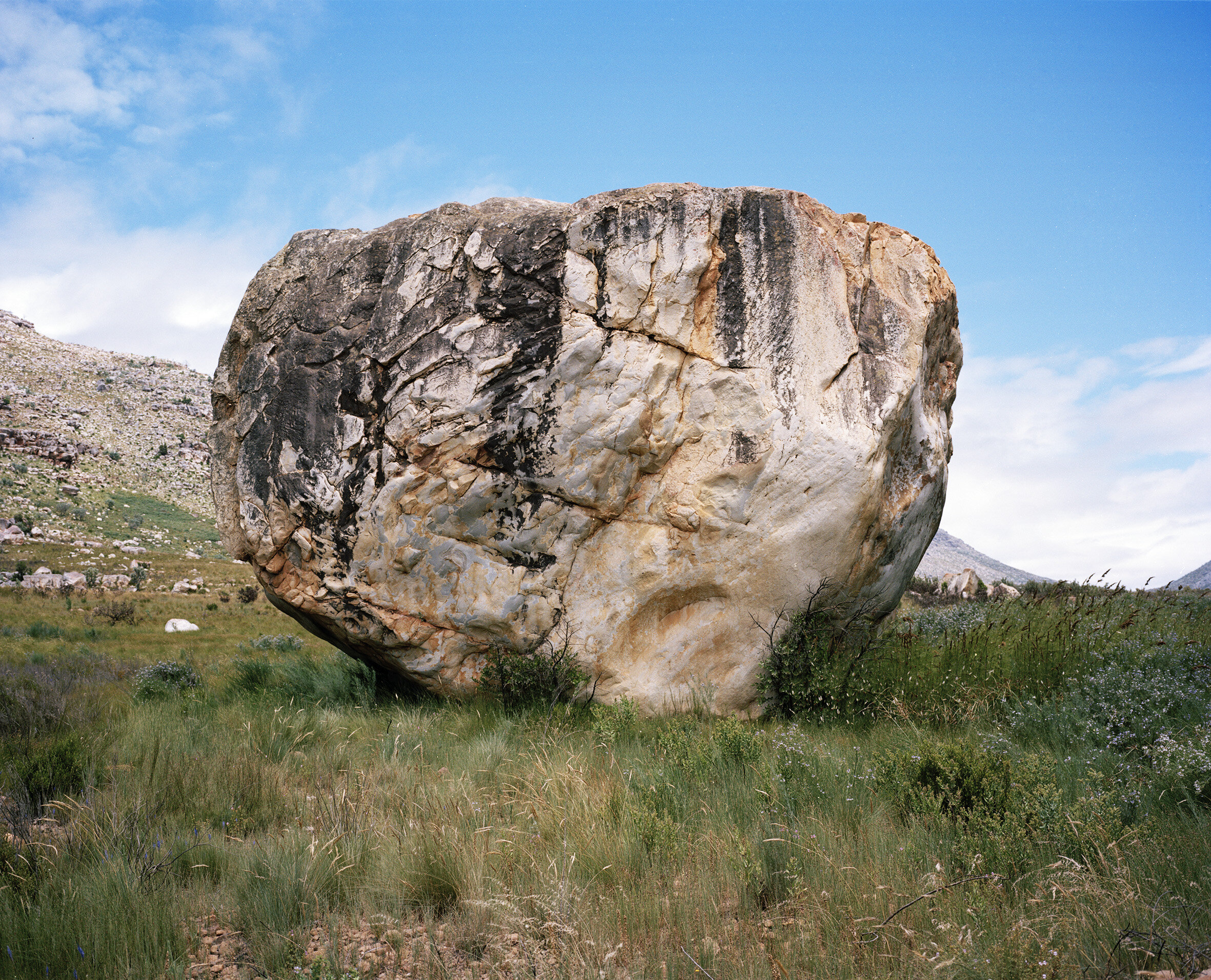Ofentse Letebele is part of the team working to translate some of the old Planetarium shows to the new Digital Dome system.
Read MoreTRUITJIESKRAAL CAVES # 4, CEDERBERG
OFENTSE LETEBELE, IZIKO PLANETARIUM PRESENTER, CAPE TOWN
JAKHALS (LANGENHOVEN'S DOG), KLAARSTROOM, WESTERN CAPE (From Loeloeraai, by CJ Langenhoven, 1923)
'To whom shall I dedicate this book? It is about a being who is not human, who is higher than man - an unattainable superior.
I think I will go to the opposite - and then I will not have to look very far. I lost a friend a long time ago - a friend that I loved and who loved me. I will never see him again forever; but forever I will never forget him. Now, after all these years, there is not a day that passes without his image coming before me and I'm grieving about him. To him I was the higher being - a Loeloeraai of a higher existence. To me he was the ultimate perfection I found on earth, of love and faithfulness and virtue. And I lost him, and I miss him dearly. . .
I dedicate this work:
To the memory of
MY FRIEND AND DOG, JAKHALS’
From the dedication of Loeloeraai, CJ Langenhoven, 4th Edition 1929, First published 1923. Translated from original Afrikaans by Nic Grobler.
Photograph inspired by Loeloeraai, CJ Langenhoven. Loeloeraai is a visitor from Venus, who spends about two weeks with a family in Oudtshoorn. They end up going on a small trip to the moon before Loeloeraai returns to Venus.
Read MoreLUZUKO DALASILE, IZIKO PLANETARIUM PRESENTER, CAPE TOWN
'I’ve learned a a lot about stars by coming here. I knew enough stars before so that I could point out a few, but here I got to learn more about them - about stars, what they are, what they are made of and so on. How they come about and into being. Before we were just learning names and constellations but here we were going deeper into it. Usually I just looked at them - without any understanding. Just you know, like if you looking at a tree that is standing there, you know that it is a tree, it is just there, it is a tree, you don’t really know what it does or anything. So I’ve got to learn more about stars, who they do and what their significance are in our lives and in the lives of everything around us. I understood that things were big you know - like the earth has got to be big, and South Africa has to be big - but without understanding that there were even bigger things out there. You know when you look at the sun, from a distance, like when it is on the horizon before it sets. You are not exactly sure where it is and how it relates to you and your life - you just know it is something that is out there. You are so far away from it, you don’t actually know that is very big. You could fit like a million earths into the sun - that is how big it is. It is hard to grasp. You know you are part of this world, but the universe can feel like something else - far from you. Even at night, you are thinking: there is the universe and here am I. But all in all you are part of the universe, you know, the universe is you, the universe is me, the universe is around - the space we are living in is the universe. This is not just earth and your life and then the universe is over there - you are in the universe. So in terms of understanding the whole universe like that. Ja… ja… a very very big place you know - really no one can understand how big it is, like fully understand. You can talk numbers, like 13,7 billion light years - what is that? You don’t know, but it’s big, something very big.’
This is a transition area between Planetarium entrance and the Planetarium dome - An area where the viewers eyes are given some time to adjust to the darkness that they will be in when inside the dome.
Read MoreELSABE UYS, IZIKO PLANETARIUM PRESENTER, CAPE TOWN
'The place where I was born influenced my life to a great extent - I was born in the Northern Cape, in a small town called Upington, where the summers would be so hot you couldn't sleep indoors; we would carry our beds outside and sleep there. That is where my love of stars started, and it kept on influencing the rest of my life - it is as if I was born to do this. I'm at my happiest when I am here and telling people what they can see up there in the night sky. When I've been away from the planetarium and I come back to it again and activate the system and see what is up there, it is like coming home. It really touches me - I remember showing children for the first time with the new system flying away from Earth, and seeing planet Earth projected on the dome, even though I knew it was just a projection - to me it was such an emotional moment, to see our planet so fragile, so beautiful, so blue, projected on the dome. I could share that moment with the children as it felt like they were with me from the responses I got. You can do so much more with the new system than the old one, although I'm still sometimes very nostalgic about the old system, how it was really a hands-on system, now you are just sitting behind the computer and pressing the buttons, but it can show you show much more and can put you right there. You feel less contained with this system, here I can fly you thought the solar system, through the galaxy, out of our galaxy and the gasps I get from people when they see our galaxy from the outside is just absolutely amazing. This is as close to real as we can take you, without putting you into space, which is of course not possible at the moment!'
Elsabé Uys, Planetarium Presenter, Iziko Planetarium, Cape Town
Read MoreWANDA DIAZ-MERCED, ASTRONOMER, SAAO, OBSERVATORY, CAPE TOWN
'Do you want to hear it? It is nothing spectacular. But you’ll get an idea of what happens during the eclipse. Maximum brightness, first contact, second contact… getting close to totality - It doesn’t go completely silent because you will always have some light. We were able to get our sensor to be sensitive enough to detect luminosity. My friends at the University of Harvard were able to achieve minus 1 lux of sensitivity, that means it is a little bit more sensitive than the human eye.'
Wanda was a post doctoral fellow at the South African Astronomical Observatory in Cape Town and currently works with the Office of Astronomy for Development(OAD) where she has led the OAD project AstroSense since April 2014. She helped develop sonification methods that allow us to listen to the stars. Her research in this field started after losing her sight as an undergraduate at the University of Puerto Rico.
Read MoreSAAO #1, OBSERVATORY, CAPE TOWN
View of the McClean telescope dome, South African Astronomical Observatory. The Observatory garden contains many beautiful flowers and plants including rare species, having become somewhat of a sanctuary in the area. Flowers in the foreground are Leucospermum cordifolium - Pincushion, Bobbejaanklou, Luisiesboom, Luisiesbos.
Read MoreBLACK ROCKS # 1, BETWEEN CALVINIA AND WILLISTON, NORTHERN CAPE
These rocks contain a high percentage of iron and their dark appearance forms a truly ancient landscape. The rocks make a metal sound when played; they are referred to with different names such as ‘rock gongs’, ‘ringing rocks’ or even ‘bushman pianos’. Found in various areas around the world and Africa, tradition formed around communicating with the help of the rocks - evident by the ancient drumming marks often found on them.
Read MoreSAAO # 1, SUTHERLAND, NORTHERN CAPE
'With the 1.9m we were looking at the spectra itself. Like looking at a prism, we used diffraction gratings where you could shift the light and look at different parts of the colour spectrum - from there you can tell from what stars were made of and so forth. Just doing star gazing, especially if you look at Jupiter and Saturn, it blows your mind away. If you look at Jupiter it looks like a solar system on its own. The big mother planet with a few small moons around it, and from time to time you see one of the moons disappear. Then you look at Saturn with the nice rings around it, it looks like a sombrero - that is just unbelievable.'
Francois van Wyk, Night Assistant and service observer, South African Astronomical Observatory, Sutherland.
Read MoreTEMBA MATOMELA, EDUCATOR, PLANETARIUM OUTREACH OFFICER, EXPERT OF INDIGENOUS ASTRONOMY
'Meteorites or shooting stars are regarded in the Xhosa speaking community as a bad luck omen. This is because it is believed that when somebody dies they become an ancestor and the spirit of that dead person is wandering among the stars guarding us from the evil spirits. So if, perhaps, one dies as a bad person then that person would be a bad spirit or ancestor and up in the celestial sphere the good ancestors would kick out the bad ancestors - so when you see a meteor coming down you are actually seeing one of those bad ancestors being kicked out of the celestial sphere and it falls down. When you see this we say ‘let the bad luck pass us for we are not the only one who saw that’ - meaning that we associate that with bad spirit.'
Read MoreABIE MAKOK, CHURCH WARDER, CARNARVON, NORTHERN CAPE
'We are leaving a memory - an inheritance through the SKA. We are staying positive because a change is coming into the land - so that many people can see. We heard about changes in Sutherland, and now it is happening here as well. Many are negative but they perhaps do not know what is really happening. For our children this will help them, to go into a direction to study, at the University. They spoke about this at the meeting, going in this direction for the youth. For the future I'd love for the children to learn, and not struggle with work, to get a bursary and to study further.'
Read MoreWILHELMINA BOSTAANDER, CARNARVON, NORTHERN CAPE
‘I’ll just tell them it is a thorny tree, it can get stuck into your clothes - you have to pull it out. It goes so deep into your skin that you need to rip it out - it is very dangerous plant. I don’t even want to get close to it and I keep my distance when I water it. It will pierce straight through your clothes into your skin - the thorns are that sharp.’ The same species of plant that was chosen for the photograph of Die Hemelblom (photograph to the right) was found growing in front of Wilhelmina Bostaander’s house in Carnarvon. Photograph inspired by Die Hemelblom, by Jan Rabie, first published 1971. The Hemelblom was sent to the earth by a concerned galactic council to ensure the survival of life on earth.
Read MoreSAKKIE POTGIETER, PASTOR OF THE UNITED REFORMED CHURCH, CARNARVON, NORTHERN CAPE
‘Some people have this strange notion that there is a clash between religion and science. Especially when they come to a poor congregation, where the majority are poor people, they will think that they are perhaps creationist type of people - who reject science per se. That is not even close to the truth. In fact, I think we love science, we love to know more. We may have a certain interpretation of the wonders of creation, we believe in a creator, we believe that God not only created everything but that we are part of that creation and we want to really dispel the notion of science versus religion as always clashing. The Bible was never written with the intention of writing up a science handbook.’
Dr. Isak Potgieter, Pastor, United Reformed Church, Carnarvon.
Read MoreSANSA, SA NATIONAL SPACE AGENCY # 4, HERMANUS, CAPE TOWN
SANSA, SA NATIONAL SPACE AGENCY # 3, HERMANUS, CAPE TOWN
SANSA, SA NATIONAL SPACE AGENCY # 2, HERMANUS, CAPE TOWN
FACE IN THE HOLE, SA NATIONAL SPACE AGENCY # 1, HERMANUS, WESTERN CAPE
A planetary poster is visible through an educational face in the hole display at the Space Science Centre in Hermanus - South Africa's national geomagnetic research facility.
South Africa maintains a scientific base in Antartica where it is ideal to study the Southern Atlantic Magnetic Anomaly - covering an area where communication systems are more exposed and vulnerable to damages and interruptions caused by high levels of radiation from space. Together with the geomagnetic and auroral observation research done on the Antarctic, Marion and Gough Islands, SANSA Space Science promotes interest in science through science advancement programmes.
SANSA(South African National Space Agency) Space Science emerged from the original Hermanus Magnetic Observatory that was first established in 1941.
Text adapted from www.sansa.org.za.
REST STOP ON R27, NORTHERN CAPE
The R27 road passes through exceptionally desolate areas and is one of the main routes from Cape Town towards the SKA project site. Here, the first phase of the largest radio telescope in the world is planned for completion in around 2024.
Read More


















